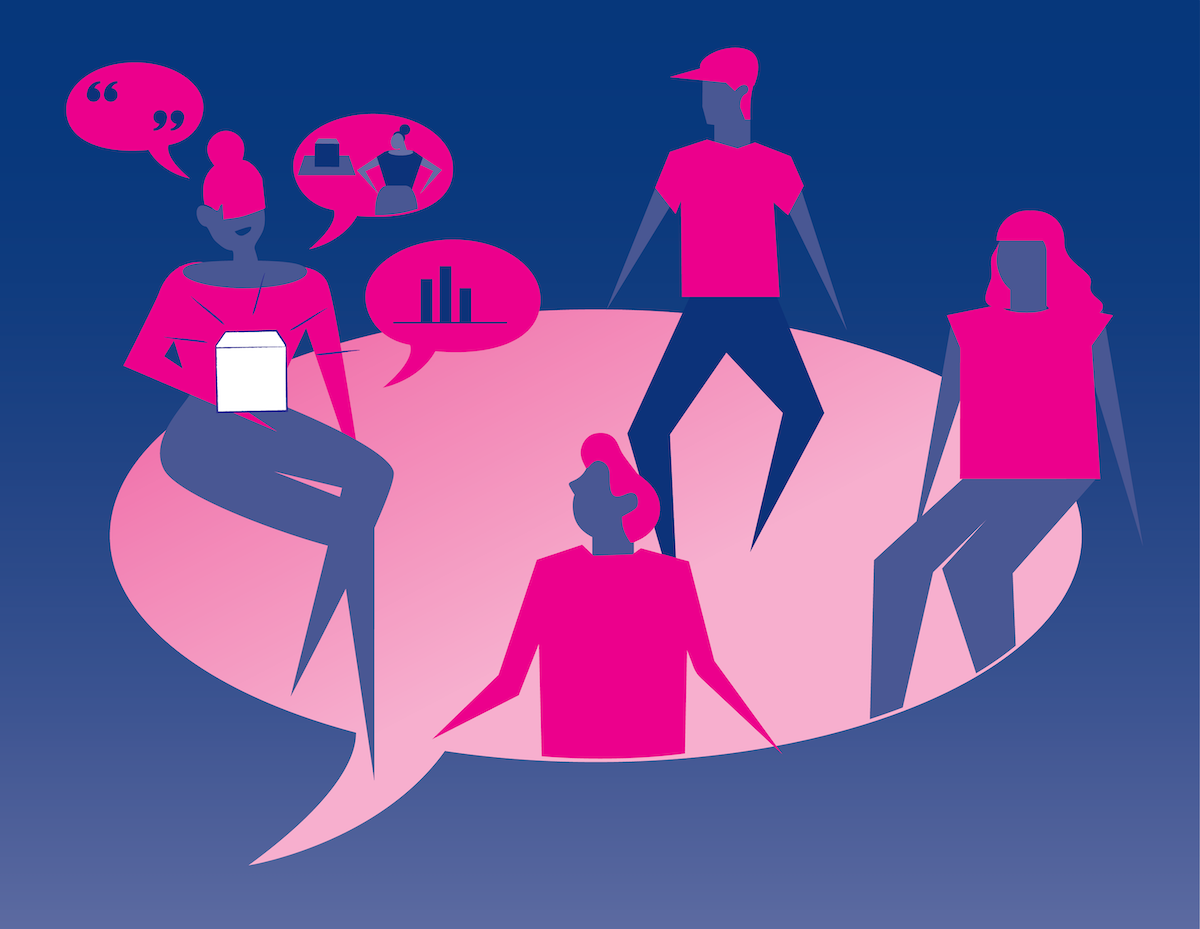The 4 “Love Languages” of Design

Language matters. That’s an obvious statement for anyone working across cultures, and it especially holds true in design. As a designer, I’ve always used my skills to create tools that enable shared understanding. This mainly came about out of necessity: I was born and raised in the Netherlands, and I’ve also lived in Sweden, the UK, and for the past seven years, the US. In my 14-plus years as an industrial designer, I’ve collaborated with clients from almost every continent, from Saõ Paulo to Seoul. By working closely with people from different countries, I’ve learned first-hand how language connects us to our cultures and to one another.
I must say: Designers have an advantage when it comes to communication. We have the benefit to use not only our words, but also visualizations, from sketches and 3DCAD to infographics and physical objects. Designers are capable of making words real, expressing an idea in form, color, material, and finish. We truly are tangible storytellers. But having the means to make ideas tangible doesn’t necessarily solve all communication issues—we all speak nuanced languages and carry biases toward the things we already love to hear, see, or experience.
You may have heard of the 5 Love Languages, a tool to help characterize the ways we give and receive love. What if a similar tool could be built for designers? What if, before sharing an idea, you could learn the “design love language” of your audience? You learn your romantic partner’s love language to better connect with them; you might learn your colleague’ design love language to better collaborate, or a client’s design love language so you can craft the perfect presentation.
Here are 4 “languages” to help you communicate the value of your design straight into the hearts of your audience:
1. Storyteller’s Circle
For many people, it’s the story behind your idea that will really make it sing. This goes far beyond how the idea solves a problem for people and the business; that should be a given. It’s about the thoughtful descriptions of how the idea came about, why it will make a positive impact in the world, how it was better than other ideas, and why you feel confident about that.
The team we worked with at PillPack did this masterfully. During the research phase of the process to redesign how patients engage with pharmacies, we heard personal, painful stories about dealing with the US healthcare system. Standing in long lines, keeping up with expiration dates, making sure you take this medicine with food and that one on an empty stomach—patients told us it's overwhelming. We could immediately tell there was a huge opportunity to design something to solve for these problems, and the stories we heard inspired the team to create a single vision, strategy, experience, and identity that consumers quickly understand.

To gauge whether your story will resonate, try rehearsing it as if you were speed dating. If people understand your concept in a single sentence or get excited in the first 30 seconds, you’re on to something.
2. Make it Zing
There are some ideas that make us express feelings that are beyond words—“oooohs” and “aaaahs.” For people who need that ah-ha moment to really make a new idea click, it’s your job to make them say, “Oh, wow.”
When sharing IDEO’s vision for the future of mobility, I’ve heard people remark, “So that’s what our city could look like.” The project explores the many ways that we imagine transportation—of people, places, ideas—evolving over the coming years. Though they’re purely conceptual, the ideas are brought to life through visual renderings and context clues that make them feel tangible—they transport the viewer to The Future. Try not to gasp when you realize that.
To get started, think about which of the senses you want to appeal to, then work to amplify them. Use visual cues or sound to your advantage—the “zing” happens when the idea flirts with us and tickles our senses, gut instinct, and imagination. Lean into the unpredictable, the whimsical. Make someone sigh or shout.

3. Straight to the Heart
What was the last performance you gave a standing ovation? When was the last time you cried at a movie? Which book moved you so much that you bought all your friends copies for the holidays?
This love language is about emotional resonance—tapping into the power of human emotion to impact your audience on a deep, personal level. I’ve found that it works particularly well for helping people build empathy for the human elements of large, complex systems and structures.
Our approach to telling the story of IDEO's work to design the voting system in Los Angeles County was to tug at the heartstrings, which helped make complicated and bureaucratic topic more accessible. The photos, videos, and audio stories were designed to highlight the humans who are casting ballots—the hardships, the triumphs, and everything in between.
Body language and word choice are key to nailing this one. Take cues from your audience—when you see someone lean in, nod, let themselves smile, you know you’ve landed on a moment that made things click. Practice your story with a friendly audience and observe those moments, then design your storytelling experience around them.
4. Lights, Camera, Action
For some, actions speak louder than words, and they can only fall in love with the idea after seeing or trying it. They want to use it over time, test it, live with it, break it, and have others do the same. For these people, ideas need to be on a movie set, including the actors, the scene, and the props.
For this audience, make sure to bring your idea to life as a prototype, and allow them to experience it out in the wild. That’s what we did when we helped Swarovski build a new chandelier. We didn’t just look at renderings—we built a whole living room in our office to test our prototype.
Prototypes don’t have to be perfect. In fact, they shouldn’t be. Showing up with a prototype made of cardboard and Legos is better than arriving empty handed. Do whatever you can to make your thing real and I guarantee you’ll see lightbulbs go off over people’s heads.
As designers, our job is to create things that improve people’s lives. To do so, designers must learn how to speak the languages of the various audiences we design for. It’s important for us all to recognize our own biases towards our favorite language, and have the empathy to listen and adapt to the other ones. Your design love language might be different from the person using your design.
Words and art

Subscribe

.svg)







